In today’s world, each and everyone is quite aware of the fact that the Moon is the Natural Satellite of the Earth. And, we also know that the Sun lits the Moon as well as planet Earth.
Every day we observe the changing phases of the moon from the new moon to the full moon to the new moon is scientifically known as the 8 lunar phases of the moon.
On the other hand, if we talk about the fact that how long is a lunar month? I would say that the moon revolves around the Earth in approximately 29.62 days which is also known as Luna Month or simply a lunar month.
While revolving around the Earth, only half of the Moon’s surface gets illuminated by the Sunlight because of the Astronomical Phenomena known as the Synchronous Rotation or Tidal Locking, making day and night on the Moon.
Editor’s Choice: Full Moon Calendar 2024 (Dates, Names & Moon Sign – Southern Hemisphere)
What causes moon phases?
The phases of the moon occur mainly due to the following reasons:
- The Moon orbits around the Earth.
- Earth and Moon orbit around the Sun.
- The Sun lits or illuminates both Earth and Moon because both of them reflect light from the Sun.
- The 8 Lunar Phases of the Moon are produced due to the alignment of the Sun and Moon in the sky.
- Half of the Moon facing the Sun is illuminated. On the other hand, the other half of the moon facing away from the Sun is always in the darkness. This happens due to the astronomical phenomena known as Synchronous Rotation or Tidal Locking. That’s why we only get to see one side of the moon forever.
Phases of the Moon in Order
A lunar month can be divided into two groups i.e. Primary phases of the moon and secondary phases of the moon. In the primary phase, there are 4 phases of the moon. These are the New Moon, First Quarter Moon, Full Moon, and Last Quarter Moon.
Similarly, in the secondary phases of the moon, there are the Waxing Crescent Moon, Waxing Gibbous Moon, Waning Gibbous Moon, and Waning Crescent Moon.
New Moon (0% illuminated)
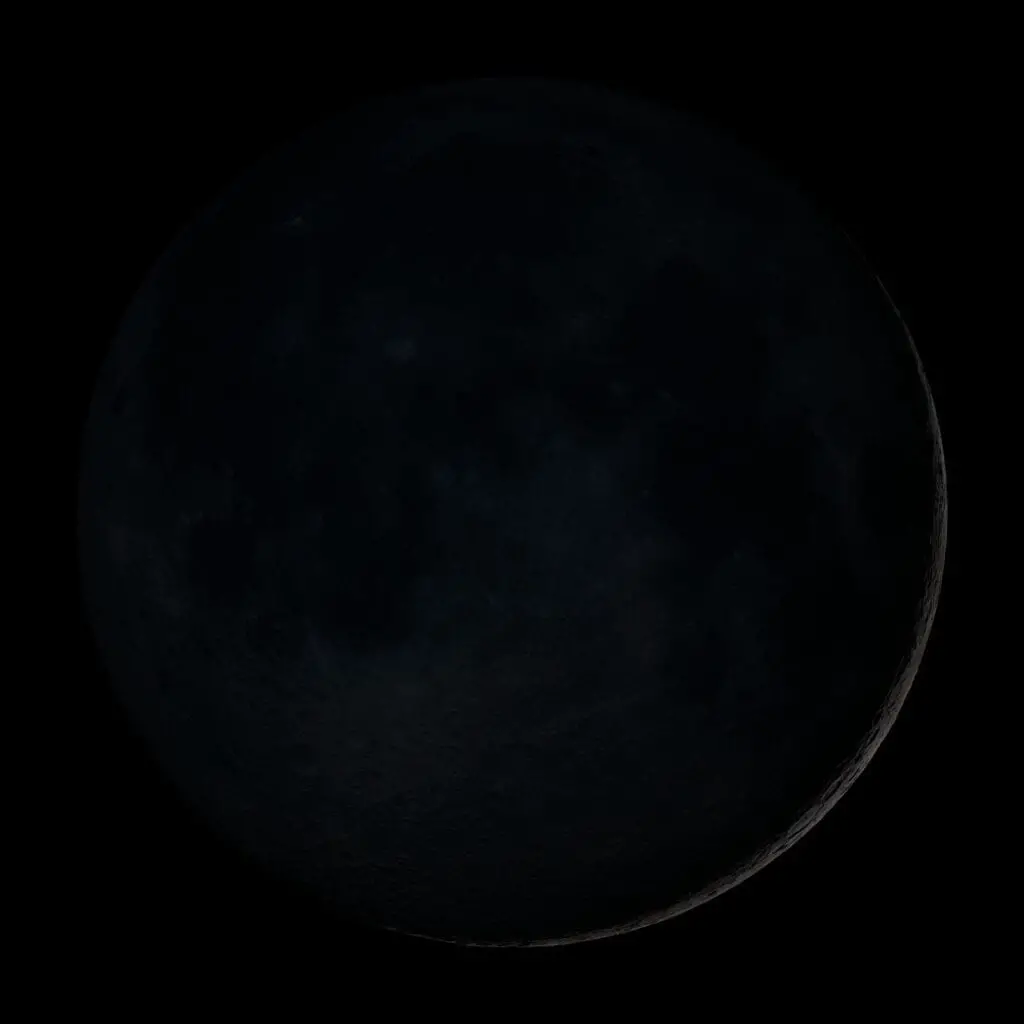
What do we call the moon phase when the moon is not visible at all because it is in between the sun and the earth? Well, it’s a New Moon Day.
In other words, the first phase of the moon is called the New Moon Lunar Phase. The new moon is also known as Amavasya. Or, simply you can say, that a new moon in Hindi is called Amavasya.
During a new moon day, the side of the moon facing Earth is not illuminated by the sunlight due to the alignment between the sun and the moon. Only on a New Moon Day, a Solar Eclipse can occur.
Waxing Crescent Moon (0 to 50% illuminated)

What is the name given to the phase of the moon in which the moon is barely visible? Well, it’s a waxing crescent phase of the moon. From a new moon to a full moon, the moon appears to grow larger as the days go by. This process is called the Waxing of a moon. That’s why we call this phase of the moon a Waxing Crescent Moon.
This lunar phase is also known as a Young Moon or simply a Full Crescent Moon. Sometimes during the waxing crescent phase of the moon; the rest of the moon is also faintly visible because of the reflection of sunlight from the earth to the Moon. This astronomical phenomenon is known as Earthshine.
Must Read: Difference Between Solar and Lunar Eclipse (Tabular Form)
First Quarter Moon (50% illuminated)
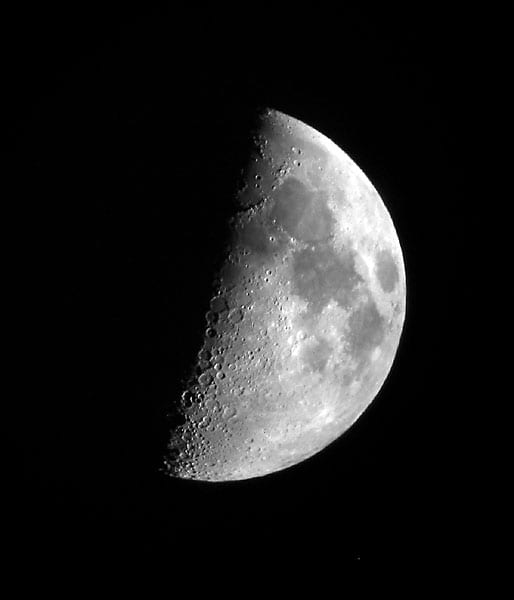
When the moon is changing from a crescent moon to a full moon, what do we get in between? In other words, What phase of the moon would be visible 7 days after a new moon? Well, it’s a 1st Quarter Moon Phase.
The third phase of the moon is called the First Quarter Moon. The first quarter means the moon is one-fourth of the way through the lunar cycle. Hence the name “First Quarter Moon”. The First Quarter moon always occurs one week after the new moon’s lunar phase.
Check Out: How Was The Moon Made? Let’s Find Out!!!
Sometimes, it is also called Half Moon. Simply because we see precisely half (right side) of the illuminated portion of the Moon’s Lunar Surface.
Waxing Gibbous Moon (50 to 100% illuminated)
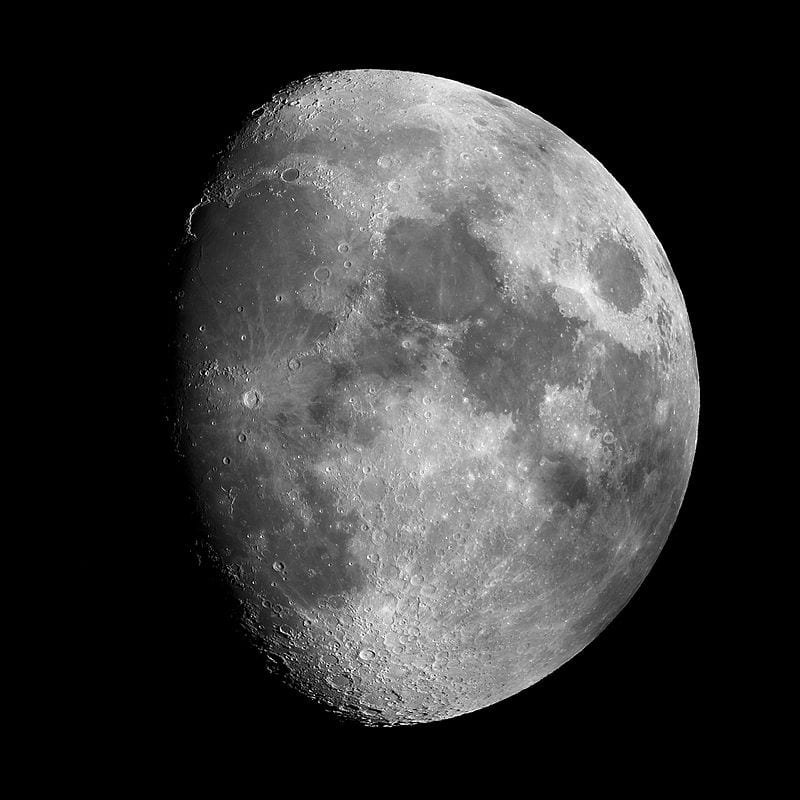
What lunar phase occurs when more than half of the moon but less than a full moon appears in the sky? Let me rephrase it differently. What word describes the moon when it’s between half and a full moon?
A moon phase between a half moon and a full moon is undoubtedly known as the waxing gibbous moon. A waxing gibbous moon phase is the fourth phase of the moon.
The Waxing Gibbous Moon always occurs between the first quarter moon and full moon day. In other words, you can say that the waxing gibbous moon refers to the moon when it’s more than half but not full.
Full Moon (100% illuminated)
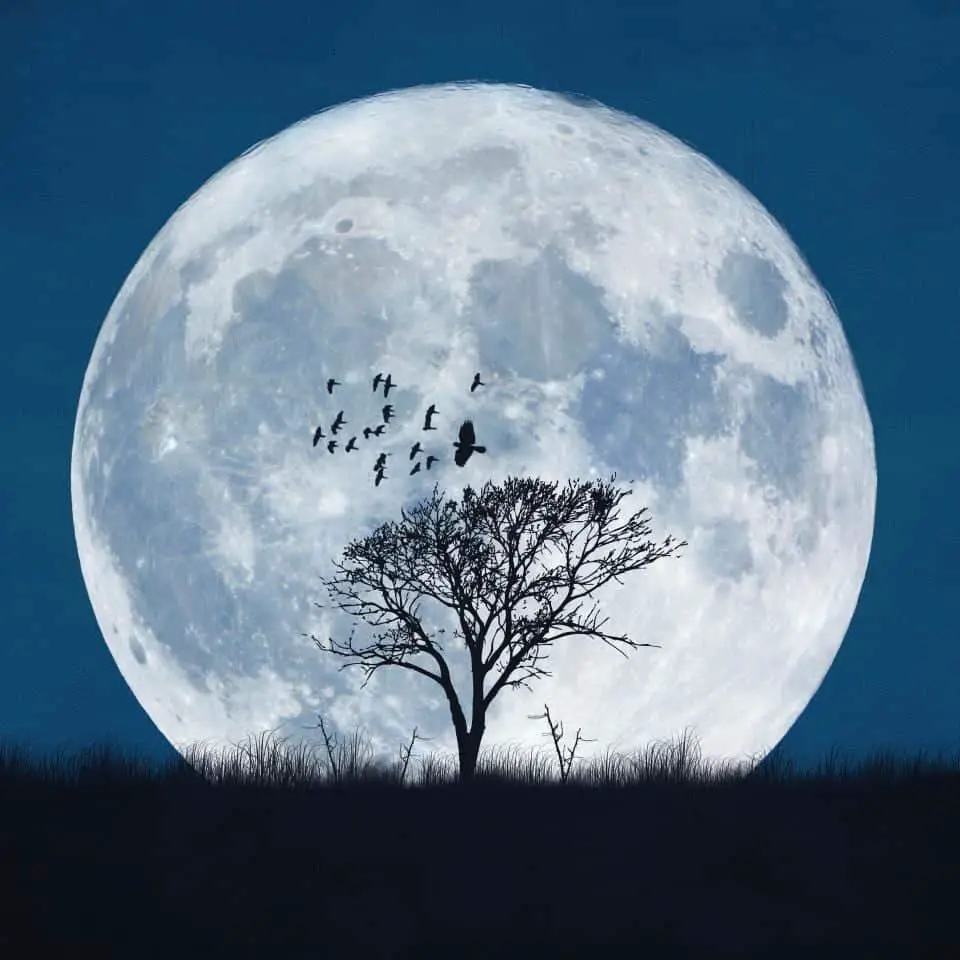
The fifth phase of the moon is called the full Moon. A full moon day is a lunar phase when the moon is illuminated or lightened completely by the sunlight.
Moon takes approximately 14.81 days to reach from the new moon to the full moon which is exactly one-half of Syondic or Lunar Month. Only on a full moon, a lunar eclipse can occur.
The Full Moon always occurs when the moon is totally on the opposite side of the earth. On full moon day, the moon looks like a complete circle.
Waning Gibbous Moon (100 to 50% illuminated)
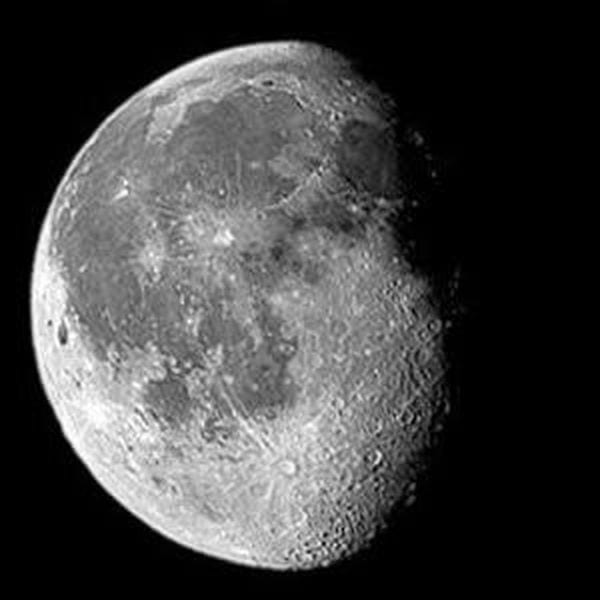
So, what follows a full moon? The moon phase that follows the full moon is known as the Waning Gibbous Moon. As the name suggests, it’s one of the first moon phases when the moon gets smaller and smaller.
In other words, the lunar shape of the moon starts to decrease, or simply, the moon is waning. The waning gibbous moon is also the sixth lunar phase of the moon.
Check out: Full Moon Calendar 2024 (Dates, Names & Moon Sign – Northern Hemisphere)
A waning gibbous moon is also regarded as the reverse of the waxing gibbous moon. The waning gibbous moon always occurs between the full moon phase and the third quarter moon phase.
Third Quarter Moon (50% illuminated)
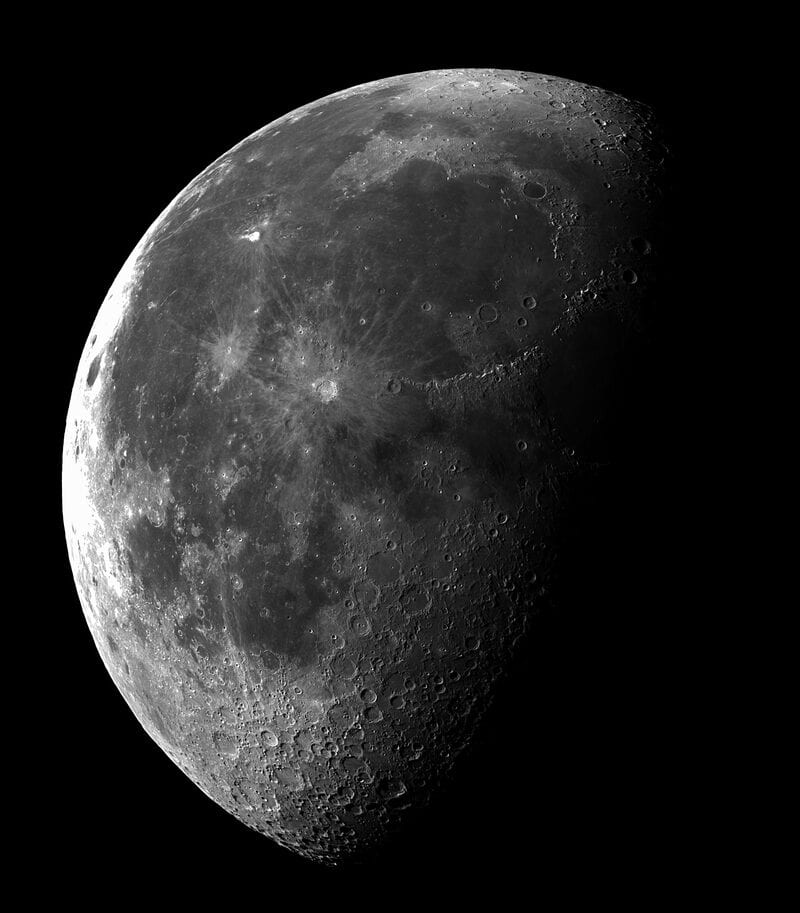
The seventh phase of the moon is called the Third Quarter Moon. A third-quarter moon is visible just after the waning gibbous moon. After the waning gibbous, it’s the next moon phase when the moon gets smaller and smaller.
Third-quarter means the moon is three-fourths of the way through the lunar cycle. Hence the name “Third Quarter Moon”.
Must read: Why Moon Is Moving Away From Earth?
This lunar phase is also regarded as the reverse of the first quarter moon. That’s why sometimes it is also called Half Moon. Simply because we see precisely half (left side) of the illuminated portion of the lunar surface.
Waning Crescent Moon (50 to 0% illuminated)
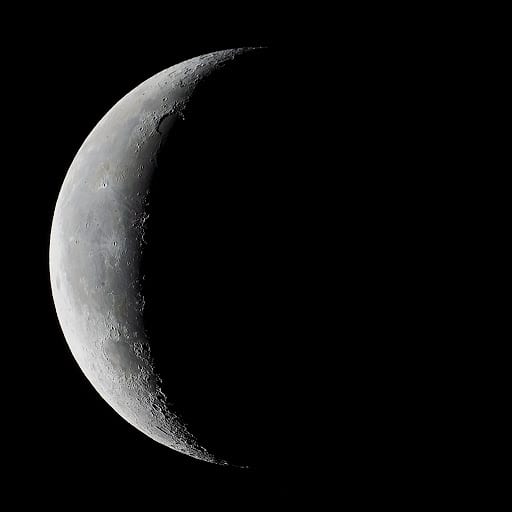
The eighth and last lunar phase of the moon is called the Waning Crescent Moon. The phase of the moon that follows the waning-crescent phase is New Moon Day.
In other words, the last lunar phase of the moon before returning to the new moon phase is known as the waning crescent moon.
When the bright part of the moon is getting smaller, the lunar shape of the moon is waning or decreasing into its crescent phase; which we call A Waning Crescent Moon.
By the end of the 29.62 days Lunar Month Cycle, the moon will vanish entirely. Therefore, we will be back to the new moon to start again the ever-repeating Lunar Month Cycle.
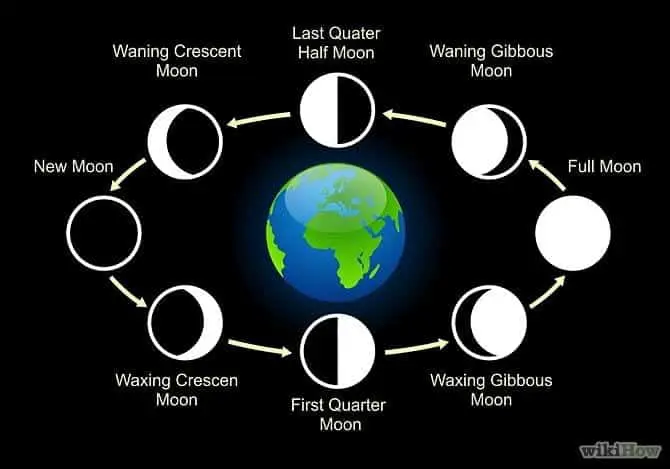
nice
I love learning about space, that is why I am an astronaut! Good job web creators!!!!!
can the moon do farts like the sun can
yes
Your welcome it was awesome i learned a lot and i can use this for a lot of homework.
Thanx Hally. Keep visiting us!!!
Hey there, I think your website might be having browser compatibility issues. When I look at your blog in Safari, it looks fine but when opening it in Internet Explorer, it has some overlapping. I just wanted to give you a quick heads up! Other than that, fantastic blog!
Hey Elena
Thank you for reaching out regarding this issue. I will definitely look into that. Keep visiting us!!!
Hi there! This post could not be written any better! Looking through this post reminds me of my previous roommate! He continually kept talking about this. I most certainly will send this article to him. Pretty sure he’ll have a great read. I appreciate you for sharing!
thanx for your pro feedback. Keep visiting us!!!
There is definitely a great deal to know about this subject. I really like all of the points you’ve made.
Thank you so much for your feedback, Jefferson. Keep visiting us!!!
Quite insightful submit. Never believed that it was this simple after all. I had spent a beneficial deal of my time looking for someone to explain this subject clearly and you’re the only one that ever did that. Kudos to you! Keep it up
Hello Kawa, thank you for your warm words, keep visiting…!!!
Highly energetic article, I enjoyed that bit.
Thanx Sophia, Keep visiting us!!!
Keep this going please, great job!
It’s amazing in favor of me to have a website, which is good in support of my knowledge. thanks, admin
Welcome, keep visiting us!!!
We’re a group of volunteers and starting a new scheme in our community. Your website offered us valuable information to work on. You’ve done a formidable job and our entire community will be thankful to you.
Thanx Archie, Keep visiting us!!!
Wonderful article! Keep up the great writing.
Appreciate this post. Let me try it out.
Atul, well-presented information and explanation.
I had to think of a way to visualize and recall the moon phase cycles.
What came to mind for simplicity of association was to think of a glass of water. Imagine this scenario.
Although contrary to the degree of illumination, a new moon, first phase (no illumination) could be visualized as a glass full of water.
If a black liquid was used instead of clear water, and a flashlight was held behind the glass it would better symbolize the cycles to comprehend this association.
If half the liquid was removed it would represent increasing illumination and a first-quarter moon, the third phase. 50% of the liquid is removed exposing the halfway point to an empty glass.
An empty glass, a full moon phase, the fifth moon phase, the glass would be empty of any dark liquid and thus represent full moon illumination. Clear full light illumination from the flashlight through the glass.
By adding black liquid back into the glass to a halfway point in glass, similarly symbolizing the decreasing illumination of the moon. The seventh moon phase, third-quarter moon. The darkness of the moon is increasing and the black liquid in the glass is rising, slowly decreasing the passage of light from the flashlight through the glass.
Although I’ve illustrated by this glass and black liquid example only 4 of 8 phases of the moon, 1st new, 3rd first quarter, 5th full, 7th third quarter, phases 2,4,6,8, could be represented by a line on the glass between each point described above to Identify those phases.
Maybe this could be of help to others and perhaps even used as a school project for any of your readers.
Thanks well done will visit your site often, I find it very informative on many topics.